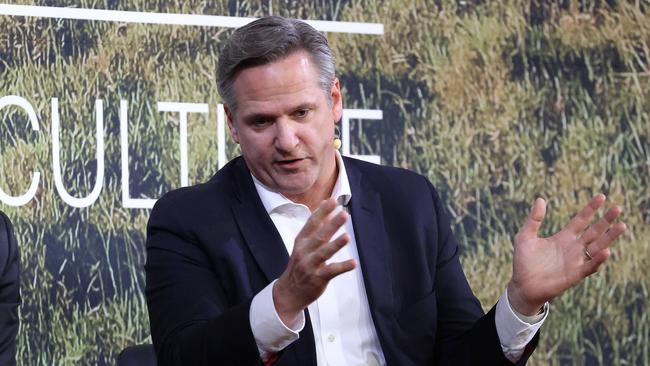Senex Energy chief executive Ian Davies announces his departure
After 14 years with Senex Energy, chief executive Ian Davies is leaving the company as the Atlas project he championed, comes online.

Ian Davies, the chief executive of Senex Energy, owned by South Korean steel giant Posco and Gina Rinehart’s Hancock Prospecting, has resigned after 14 years with the company.
The departure of Mr Davies comes just weeks after Senex secured regulatory approval for its $1bn expansion plan. A new chief will take over as the larger Atlas project comes online.
Mr Davies will hand over the reins to Darren Stevenson, Senex’s chief operating officer, in late 2024.
Mr Davies said he was proud of his achievements but it was the right time after securing the Atlas approval.
“My major contribution to Senex in the medium term has been achieved. I am also very fortunate to have an amazing leader in my chief operating officer, Darren Stevenson, who I can leave to run the business. He has the same DNA, the same culture that we built together,” Mr Davies said.
“I feel like the business is in really good hands. The business has a guaranteed good future, not only the projects that we’re developing, which by the end of this year, will be 75 per cent complete, but also in the broader strategy.”
Mr Davies has been a vocal critic of the federal government’s perceived inactivity in accelerating new gas developments and scolded it over how long it took Senex to secure Labor’s approval for expanding its gas development – which caused significant tensions between the two sides.
The government signed off on the expansion, to the relief of big users such as CSR, BlueScope, AGL Energy and EnergyAustralia, which all have supply agreements with Senex.
Continued regulatory delays would have threatened the capacity of Senex to deliver the gas for 2025, which would have forced users to either seek alternative supplies or reduce their operations.
Gas is predominantly used for residential heating in Victoria, but spikes in electricity demand will cause increased pull for gas across the national electricity market.
As gas supplies run low, the cost of gas-powered electricity will soar. The wholesale cost of electricity is not immediately passed to households and businesses, but drives up subsequent prices when tariffs are reset. The next annual tariff will be set on July 1, 2025.
Australia’s ageing coal power stations are experiencing a spate of small outages, which have constrained electricity generation.
Australia’s renewable energy generation is also likely to pick up soon. Victoria has for much of 2024 seen reduced wind supplies amid unseasonable weather.






To join the conversation, please log in. Don't have an account? Register
Join the conversation, you are commenting as Logout